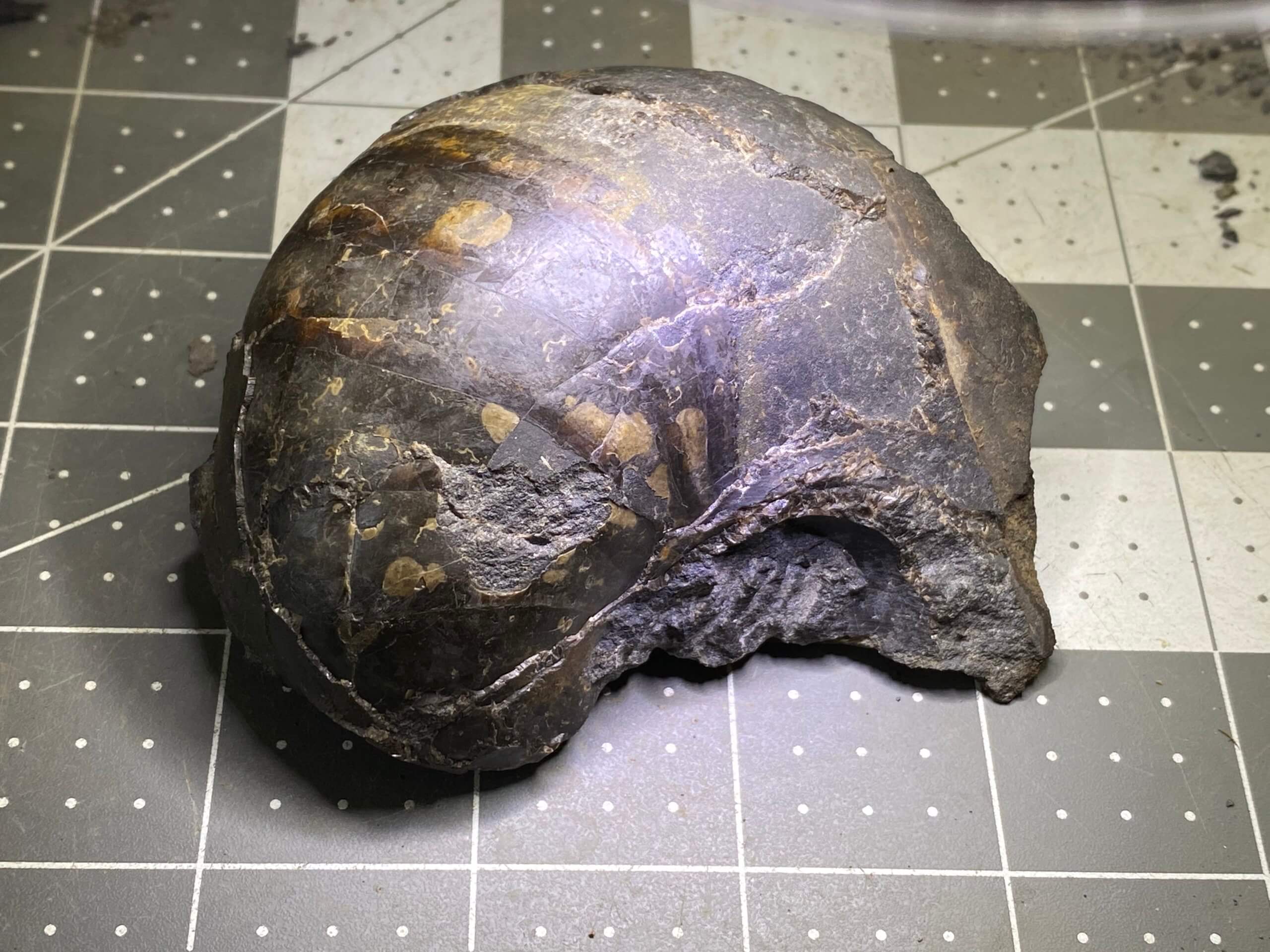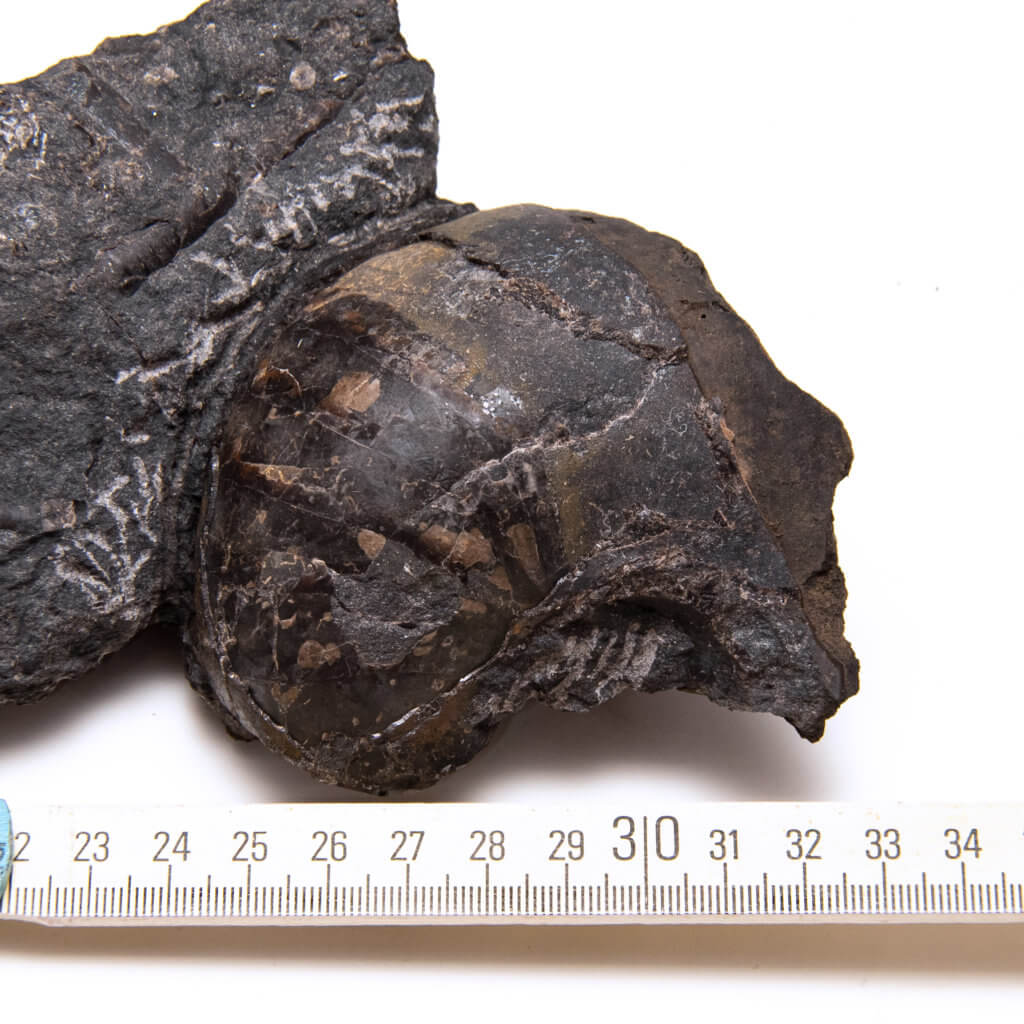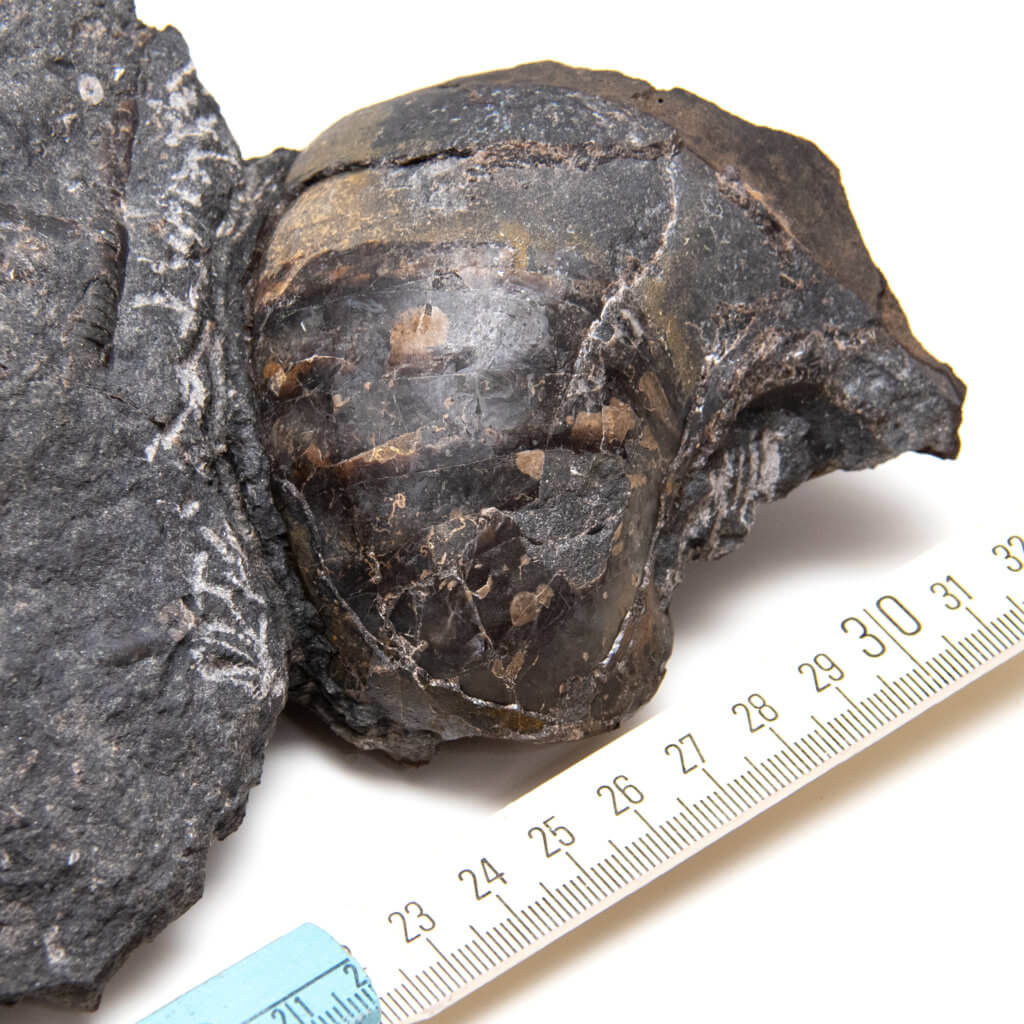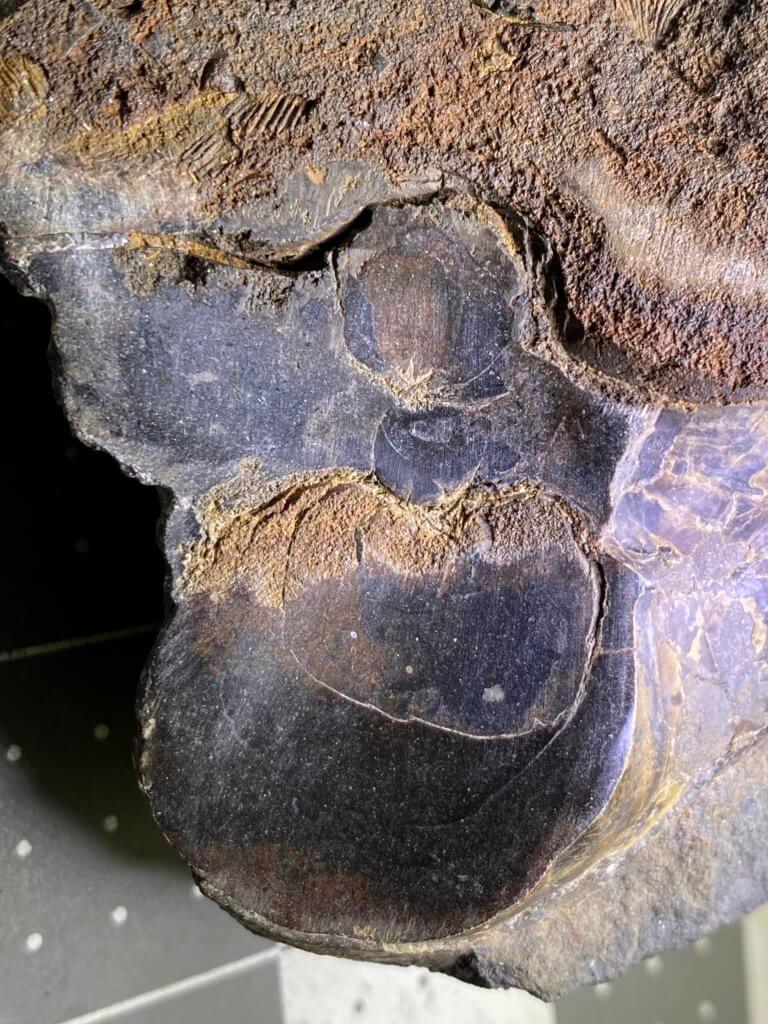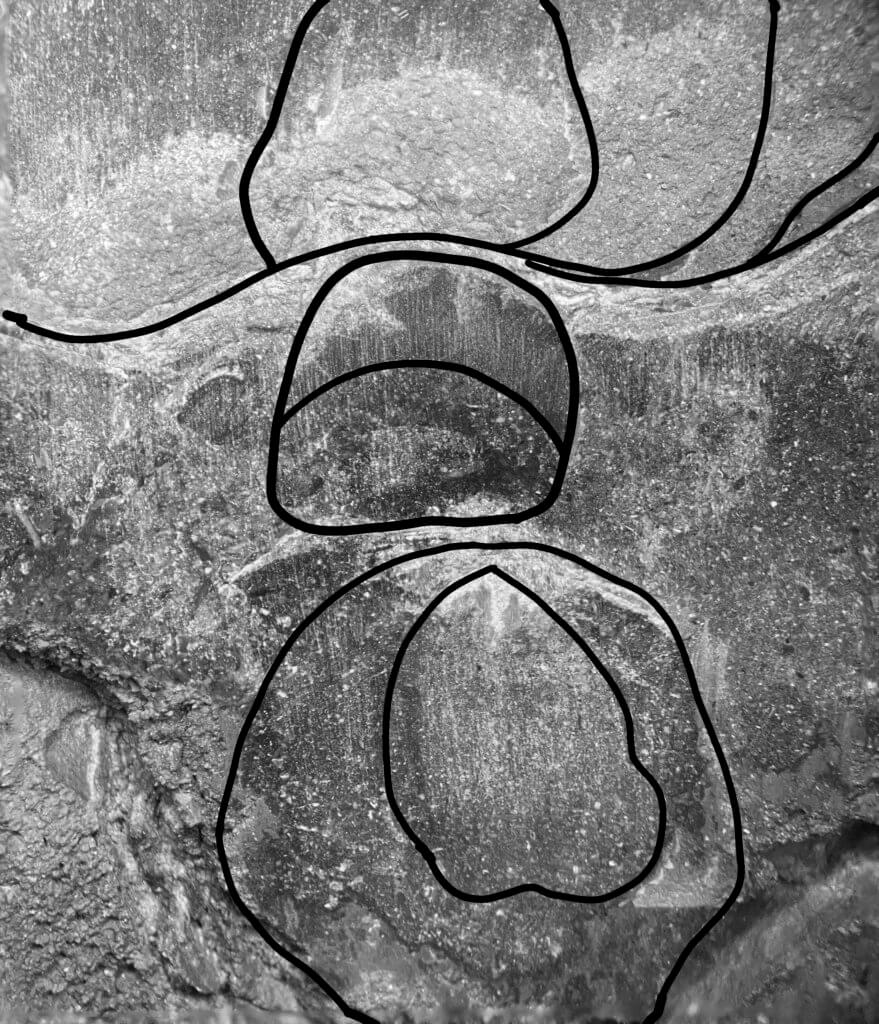Catalog Number: CG-0066
Since my last Solenochilus, it’s been a while since I’ve found something very interesting. This evening I picked up a large rock, drove the 6lb sledge into it on edge and this nice specimen popped off the limestone boulder. The shell detail is really nice, making it easy to identify.
The shell was up against the eroded edge of the boulder, so it is not complete. The photo below of the leftover mold shows the termination placement. There is a 3 to 5 mm edge of soft eroded limestone, similar to clay or mud. Best I can figure, this happens when contact with water demineralizes the limestone, removing the calcite that cements its components.
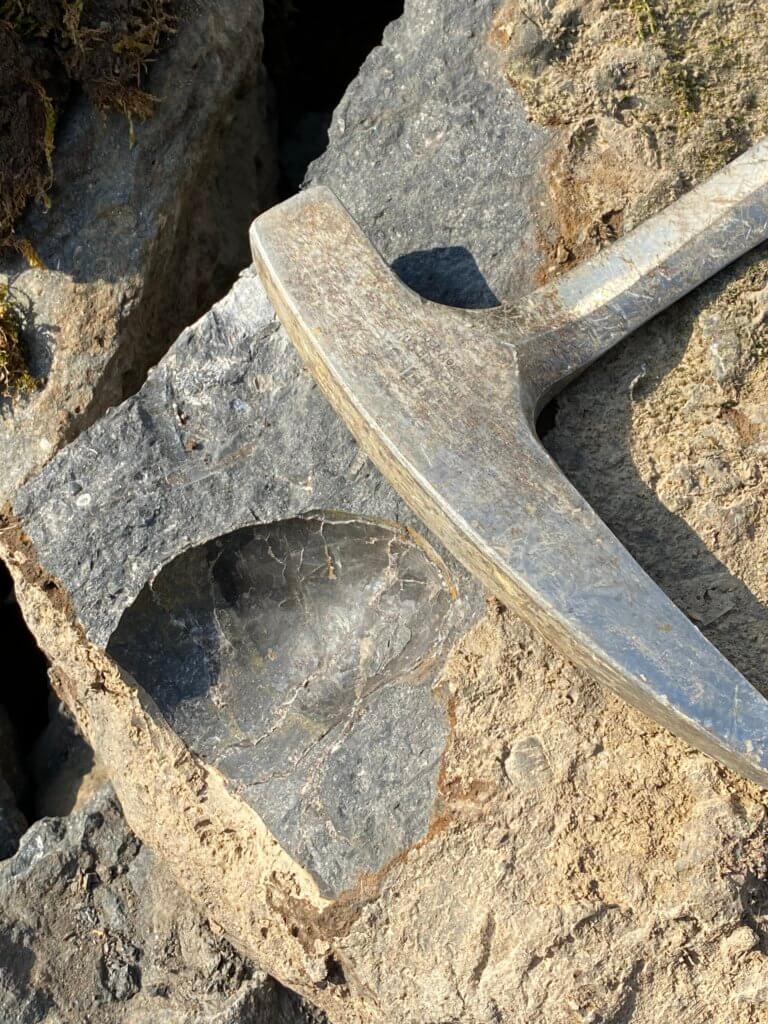
Photos of Solenochilus Before Final Prep
Post-prep and general discussion
After prepping to this point, I continued to work the shell/limestone edge, removing a little bit of limestone at a time. Eventually, the shell vibrated off the matrix. The hidden portion was a crushed edge folded under. While it appears that a large portion was ground down, the shell is also crushed and warped slightly.
On the underside, three bisected septal chambers can be seen. This is the most detail I’ve seen of these chambers in a local specimen thus far. You can see the creature rapidly expanding it’s conch in the early stages, going from 6mm in the small circle, 11mm in the second circle and 28mm in the final circle. This is along a single plane, and there are sub chambers inside of each.
The septal walls are in-tact mostly, with a small break or two noticeable. The siphuncle is not immediately noticeable, however there are markings that I suspect may be it. There is a small raised line that runs along the top of the venter, easily noticeable.
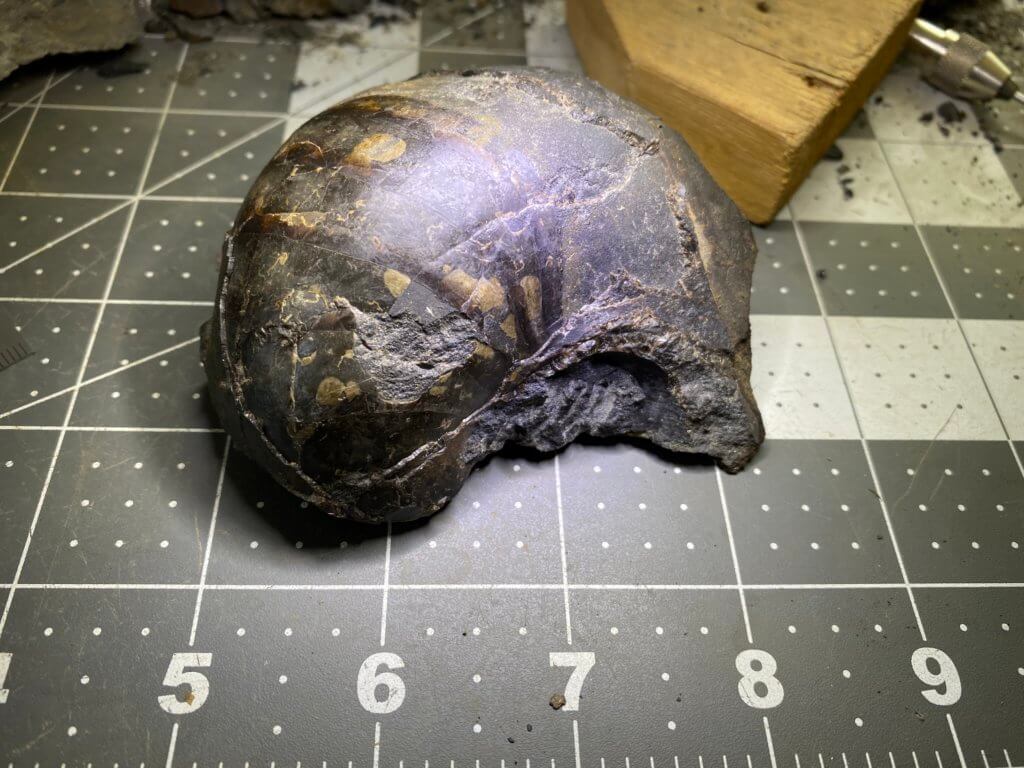
Specimen underside details
Once freed, I decided to focus on the bottom of the specimen. It was covered with a layer of demineralized limestone. You could see details of separate septal chambers. Next, I photographed the specimen in this state, and got out my rock polishing pads. I took the three chambers to 3000 grit.

More Solenochilus specimens
Solenochilus Resources Online
- Pennsylvanian Atlas of Ancient Life Midcontinent United States – Solenochilus
- 1966. New Solenochilus Species from the Conemaugh Series of Eastern Ohio – OSU Databank

